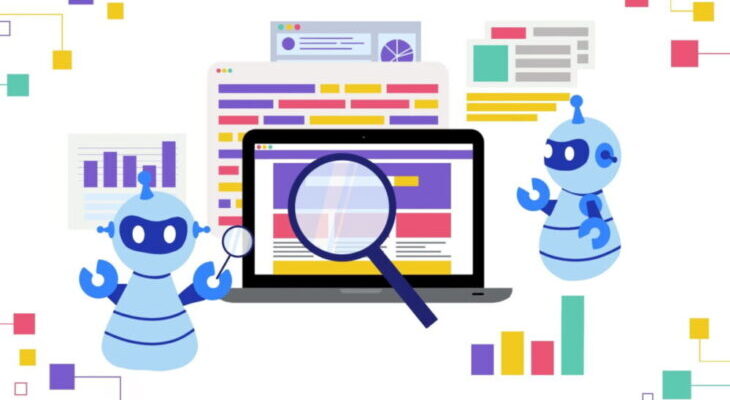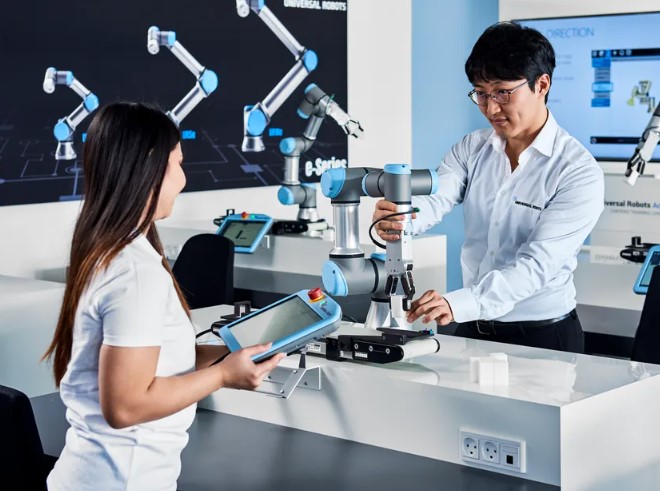Testers today need to use highly sophisticated approaches to ensure the quality of the software provided at the rate of Agile/Continuous Delivery. The most effective method for testing in a continuous delivery cycle is, without a doubt, automation testing. It is obvious that the scope of automation testing has the ability to alter the course of the QA sector.
Every company will have a website and will need to manage ever-changing application requirements. It is not impossible to meet the changing application needs in a rapidly expanding number of devices utilizing automation testing with appropriate test coverage, but it is uncertain.
Scaling testing from local settings has become simple thanks to the cloud and SaaS, which also alleviate schedule delays caused by the environment. However, as testing becomes more automated, machine learning and artificial intelligence (AI) would represent the next step in testing automation.
The AI turns out to be a helpful tool for testers to validate and improve the automated testing process with minimal human participation. It gives testers the ability to automate test cases, improving accuracy and efficiency. In this article, we will learn more in-depth about the role of AI in automation testing.
Automation Testing: An Overview

Automating and comparing software or applications being built (or developed) to user requirements is known as automation testing. Automation testing often entails running test cases using automation technologies to validate various application components and modules.
You can do away with the requirement to manually run the test cases by using automation testing. To save time and money, testers can automate the test cases.
Automation testing’s range of applications is particularly helpful for carrying out repetitive operations that consume QAs’ valuable time. For those who are unfamiliar, automation testing entails a variety of testing kinds where you may simply execute test cases repeatedly with various inputs.
Some components of functional testing, regression testing, and API testing are simple to automate, which will hasten the overall QA process.
Lifecycle of Automation Testing

Testers often carry out the entire testing procedure in accordance with the automation testing lifecycle. You should follow these sequential steps to complete all of your automation testing requirements quickly and accurately:
- To comprehend all the many components that you might automate in your test cases, determine the scope of automation testing.
- Choose the tools for automation testing that support the scope of your automation testing.
LambdaTest is an AI-powered test orchestration and execution platform that helps you to perform both manual and automation testing processes over 3000 real desktop browsers, devices, and operating system combinations.
Individuals and businesses can utilize this platform, and thanks to its straightforward learning curve, you can get started and begin testing within minutes. An illustration of this process is as follows:
- If you haven’t already, access all of LambdaTest’s features and device options. Go to the LambdaTest Dashboard. Select TurboBoost from the left sidebar to enter the AI realm of LambdaTest.
- Select-turboboost-from-the-left-sidebar To initiate your inaugural test, pick the test automation framework and the test type you want to run.
- Choose-the-test-automation-framework Click on Commence to kickstart your first AI-enhanced automation test on LambdaTest.
- This AI-driven feature offers a systematic approach to tackle each type of failure after classifying errors. This focused approach eliminates unnecessary steps, leading to faster issue resolution and heightened efficiency. This feature update enables you to efficiently navigate to the exact corrective actions or solutions for each error.
- Create a test plan, corresponding technique, and test cases to effectively carry out the testing process.
- Create the testing environment so that the test plan may be carried out using inputs of various types and for various test types.
- Create a test automation script based on your testing requirements, then run it using the appropriate tool you selected in the second step.
- After the test case execution is finished, analyze the test findings.
Why AI?

The technology of the present and the future, artificial intelligence (AI), is having a favorable impact on every industry sector, including automation testing. AI is one of the main candidates for the scope of automation testing in the future because it aids in comprehending complex data and managing redundant jobs.
Additionally, it helps with output information analysis and bug prediction. The following section goes into further depth on all of this.
What Benefits Does AI Have For Automation Testing?
Automation testing is not exempt from the maelstrom of changes AI brings to all business areas. Following are a few benefits of AI in automation testing that will make your organization flourish:
Zero Unattended Errors
Testers can step aside and let AI run the tests with little to no oversight. When a bug is introduced, the AI immediately notifies the tester of the error, the cause of the failure, and any potential fixes. To make quick modifications, it further evaluates the scope of automation testing.
Greater Quality
AI processes massive amounts of data at once to discover patterns in errors and spot abnormalities, speeding up testing and improving its quality.
Quick Response
The software testers and developers will receive a speedy feedback report on the functionality and effectiveness of the applications because the AI testing procedure is automatic. Another factor is the speedy problem fixes, which shorten delivery times and assist to get items to market more quickly.
Also, read about the software testing life cycle and discover effective practices.
In DevOps, Actionable Continuous Feedback is Essential

Find out why actionable feedback is essential for continuous delivery. Machine learning and artificial intelligence (AI) are able to spot mistakes extremely early and offer essential advice in the form of understandable and actionable error messages for failed testing. The DevOps team can ensure that the application functions properly with the help of the findings and recommendations.
Tests for Effective Automation
With AI in automated testing, you may expand the breadth and depth of tests, which will ultimately improve the overall quality of software. Automated software testing can examine data sets, locator values, repositories, and internal program states to check if the software is acting as planned.
AI can help you choose the best collection of tests to run for application updates so that you may maximize your testing efforts and give adequate test coverage, which is not feasible with simply automation testing.
Manage Repetitive Tasks

In order to satisfy the need for continuous delivery and boost productivity, AI-driven test automation can handle repetitive activities. Regression testing is highly suited for AI, which can compare the result trend with the current code to discover all the damaged places and help the developers fix them.
Smart Suggestions
Every minor change does not necessarily necessitate running the complete test suite. The AI can suggest which tests are impacted by changes.
Autonomous
hundreds of selectors are automatically located, identified, and self-corrected or repaired if one selector fails. Testsigma employs a dynamic locator technique to locate components that increase test robustness and reliability while requiring less upkeep.
Fully autonomous test generation using AI technologies that can identify bad code through natural language processing (scriptless test automation) and advanced modeling. With this knowledge, the DevOps teams may operate more efficiently and provide errors-free outputs.
Maintenance Checks

Testers no longer need to update test cases and regularly monitor the changes because AI is used in many automation domains. With the help of AI in test automation, tests can be partially automatically repaired while simultaneously preserving all the affected tests!
Extensibility
AI has a lot of potential to improve the new era of smart test automation. AI broadens the use of automation testing, enabling non-technical team members to develop and scale tests as well. In brief, AI improves test automation by speeding up the development, testing, maintenance, and time to market while providing real-time, actionable feedback.
Trends Emerging in the Field of AI-Powered Automated Testing.
Exploratory testing
Prior to recently, exploratory testing was considered a non-automatable action. However, some businesses have started teaching testing robots with self-learning capabilities to mimic quality assurance engineers manually exploring web applications and spotting flaws.
The bots slowly pick up new skills from their observations as they cruise the application and look for odd patterns. Exploratory testing, by definition, calls for human intelligence. However, AI will quicken the process.
Similar to how a carpenter who learned their craft with manual tools becomes better, more productive, and more efficient when given power tools, V2Soft has QA professionals, and their job is made better and more efficient by implementing our AI automated testing tools and AI testing framework.
Spidering AI
Machine learning is currently used to “spider automatically” generate tests for apps, which is one of the most used AI automation techniques. There are programs for testing AI that “crawl” the application automatically.
While the AI-based automated tools are “crawling,” they gather data by measuring load times, downloading every page’s HTML, and taking page screenshots. The steps are executed repeatedly. Emerging patterns and flaws can thus be quickly corrected.
Self-Healing Test Scripts

They are one example of how AI is being used in test automation. These scripts increase the efficiency of quality assurance managers. The numerous test automation scripts must be updated whenever the user interface is changed.
Since AI software testing solutions are better able to distinguish between a “change” and a “bug” than human-led manual testing processes, they can automatically update the script whenever an AI-powered test fails following an update.
Test Quicker, Ship Quicker
Codeless AI testing is far quicker than manual testing or well-known automated solutions since testers spend less time writing code.
This enables businesses to accelerate the testing process and product deployment. Codeless tests are also easier to scale because they run concurrently across browsers and devices. Therefore, no-code testing technology helps speed up time to market, which is essential in today’s cutthroat market.
Conclusion
It is now considered best practice for automation testers to write tests first and use the shift left methodology. It is occasionally not even attempted. (Why?) This might be made simpler with the aid of artificial intelligence. Enterprise-level AI use by businesses has already improved operational effectiveness and productivity outcomes.
Automation offers businesses the chance to replace boring, repetitive activities. With the advent of the new era of intelligent automation, automation is now integrated with the gathering of input, data analysis, efficiency-finding, and even decision-making of AI!





